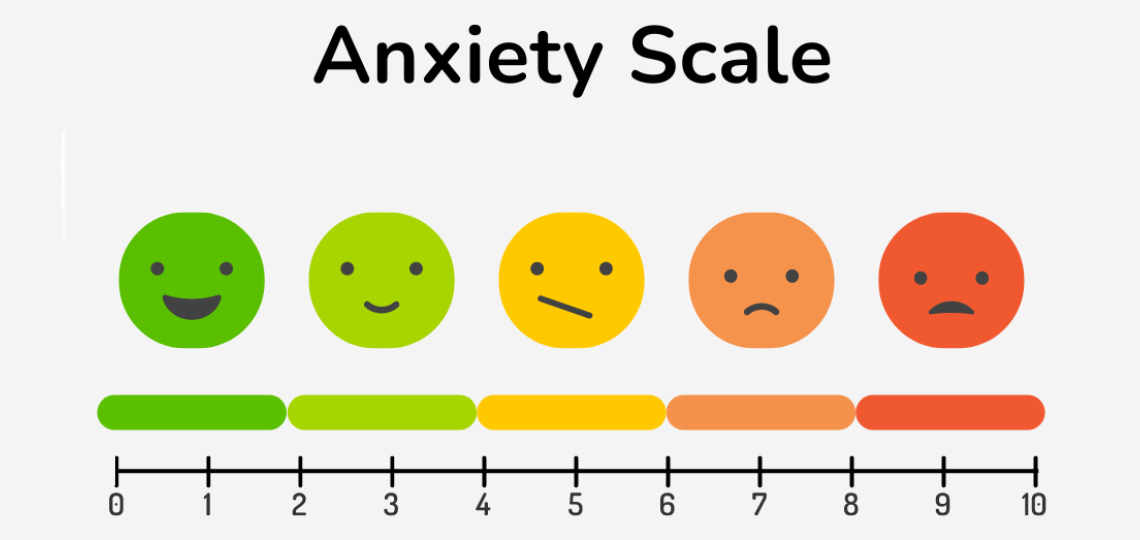Anxiety is often not an all-or-nothing feeling. Just like other emotions, anxiety exists along a continuum with different levels of intensity. You can picture this continuum using the anxiety intensity scale below.

It may be hard for your child to describe how intense their anxiety is when they are feeling it. It may also be hard for them to remember how anxious they felt in past situations. Because of this, it can be helpful for your child to have a tool to communicate to others how anxious they feel.
During LUNA, your child will use the anxiety intensity scale as a tool to communicate their anxiety levels and understand their own anxiety better.
Your child will practice rating their anxiety on a scale of 0 to 10 to describe how intense their anxiety feels in different situations. When they are feeling no anxiety, your child’s rating would be 0. If they are feeling extremely anxious, their rating would be 10. Most of the time, their anxiety intensity rating will probably be somewhere in between. By using this scale, your child will learn how to express their emotions at different intensity levels or amounts. This scale will also help you keep track of how your child is feeling as they progress through LUNA.
Learning to Identify Anxiety
Learning how to identify anxiety can take time, so it is okay if your child still struggles to rate their anxiety on the scale after just this week. If you notice that your child is struggling, there are a few different things that may help them.
You can also help your child or teen label their emotions. Since it is easier to notice the outward signs of anxiety, like pacing, sweating, avoidance, or fidgeting, you can start from there. Once you have identified your child’s outward signs of anxiety, you can use those signs as an opportunity to help your child label the anxiety they may be feeling. Identifying these signs can also help you react to your child’s anxiety in a helpful way.
For example, if you notice that your child is hesitant to go outside because they saw an insect, this could be a good time to help them associate their behavior with their emotions. In this case, your child is avoiding the outdoors because they are experiencing anxiety due to a fear of bugs.
Look at the example script below to see how you can connect your child’s behavior to their emotions.
Step 1: Label the emotion you think your child is experiencing.
- “It looks like you are feeling worried.”
Step 2: Connect the emotion to the outward physical cue or behavior with empathy and sincerity.
- “I can tell how worried you feel because you have been avoiding being outside with those bugs, and I know how hard it is to feel anxious like that.”
Additional example: George’s mom notices that every time someone talks to George about getting a job or going to college after high school, he becomes very tense, tries to avoid the subject, or leaves the conversation. He has also stopped going to meetings with his school counselor to talk about his future. The next time George avoids a discussion about college, his mom gently tells him that she thinks he is feeling anxious. George’s mom says, “Hey George, I know how difficult it has been to talk about college, and I can see how tense and anxious it’s making you feel. I’m here for you if you need my help”.
It’s important for your child to practice using the anxiety intensity scale. Try to use the anxiety intensity scale whenever you have a chance to talk with your child about anxiety. When your child or teen is worried about something, you can ask them in the moment:
- What is making you anxious right now?
- How intense is your anxiety on a scale of 0 to 10?
Alternatively, you can ask your child or teen this question when they no longer feel anxious:
- What made you anxious earlier today?
Keep using the anxiety intensity scale to keep track of how intense your child’s anxiety is in different situations throughout LUNA.








